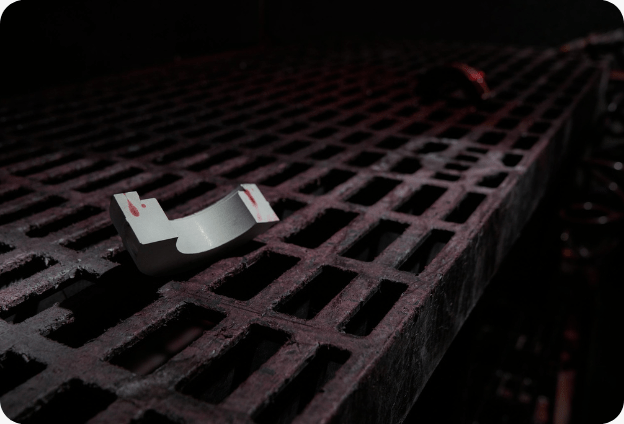The Pros and Cons of Dye Penetrant Inspections

Dye penetrant inspection (DPI), also known as a liquid penetrant inspection (LPI) or testing (LPT) is an extremely efficient way to detect surface flaws in production or in-service parts. Before getting into the pros and cons, it is important to understand how DPI works and what it tests for.
What Is a Dye Penetrant Inspection?
Used in a wide range of industries, DPI is a widely applied and cost-effective non-destructive inspection method used to locate surface-breaking defects in non-porous materials. By non-porous, we mean materials that don’t let liquid or air penetrate the surface, like plastics and most ceramics. The aerospace, automotive and petroleum industries rely heavily on DPI as a non-intrusive way to identify defects, such as cracks, fractures and leaks.
What Is It Testing for Exactly?
These tests reveal casting, forging, or welding surface defects, such as hairline cracks and surface fractures in new products, and possible fatigue cracks on in-service components.
What Can’t Dye Penetrant Testing Do?
As previously mentioned, DPIs don’t work for porous materials, so anything that absorbs liquids cannot be tested using dye penetrant. In addition, a DPI is only a surface test, so it is not appropriate for examining the sub-surfaces of a piece. For example, it won’t help discover defects (cracks, shrink, etc.) on the inside of a part.
How Does It Work?
DPI is based upon capillary action, in which a fluid penetrates into a surface without any outside forces. Penetrant is applied to the piece by either dipping, spraying, or brushing, depending on the part being tested. After a pre-determined amount of time, usually 10-30 minutes, the excess penetrant is removed from the surface and the developer is applied, which draws the penetrant out so that any flaw indicators are left to be seen through ultraviolet or white light.
Can I Test It Myself?
Yes and no. Just because you can, doesn’t mean you should. If you need to test more than one part, scaling could be an issue. When testing is complete, are you certain you have the expertise to spot all possible anomalies? Also, if you’re doing the testing, you lose out on the opportunity to obtain third-party verification. Lastly, are you aware of any environmental reclamation hazards that need to be addressed, depending on the dye being used? Sometimes, the solution is simply looking for the right partner who is equipped for all of these challenges.
Pros of Dye Penetrant Testing
Dye penetrant testing plays an important role in ensuring quality and safety in many industries. Advantages to choosing dye penetrant testing include:
- Non-destructive approach maintains the structural integrity and functionality of the item being tested
- Ideal for detecting flaws that break to the surface, including fatigue cracks, quench cracks, grinding cracks, porosity, laps, seams, pin holes in welds
- Excellent for testing materials like metals, plastics, most ceramics, and other non-porous surfaces
- Available in a wide variety of sensitivity levels to detect issues that may not be visible to the naked eye
- Works well on complex geometries
- Low cost compared to other forms of non-destructive testing
- Fast and efficient — even when covering large inspection areas or large volumes
- Conveniently portable and can be performed on site
Cons of Dye Penetrant Testing
In spite of its many benefits, dye penetrant testing is not the best choice for every testing situation. Limitations of dye penetrant testing include:
- Only detects surface flaws. Other testing methods are required to find sub-surface discontinuities and internal issues.
- Does not quantify the depth or severity of the flaw
- Is not effective on porous materials
- Contaminants can hide defects, so thorough cleaning of the surface is required prior to testing. Post-testing cleaning is required to remove the penetrant solution from the test item.
- Does not work well on extremely rough surfaces and cannot work on surfaces with paint, varnish or other types of coatings
In conclusion, dye penetration is a proven and powerful testing method for many situations — one that requires careful attention to detail every step of the way. It’s important to have your testing performed by experienced and trained technicians, like those at IIA. Our team can deliver accurate results the first time.
If you are considering a dye penetrant inspection, contact us today. IIA can help you determine whether dye penetrant testing is the right test for your materials.




